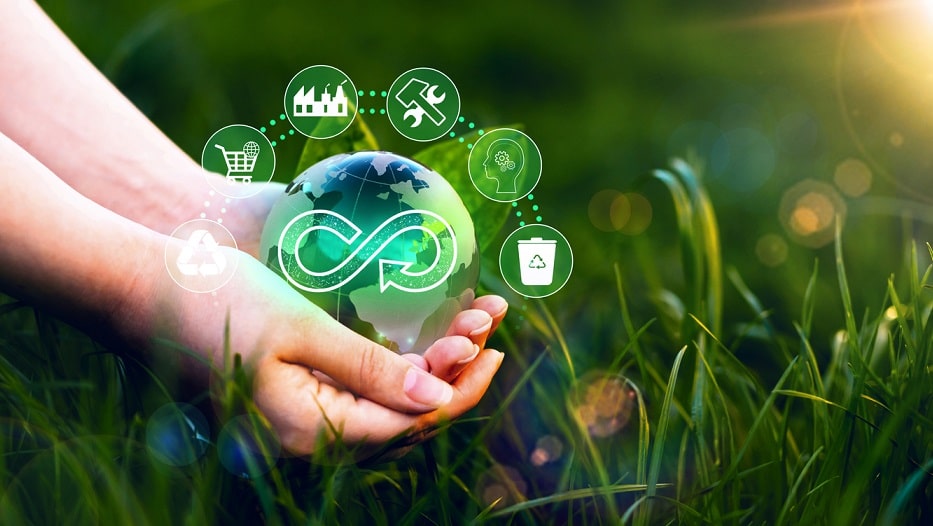Julia Maria Gomez de Avila Segade | 13/06/2023
Sustainability and low environmental impact are not yet defining characteristics of a business model, but rather a requirement for forming part of the international market. Many of the actions that can be taken to follow a path that is respectful of the environment and of the planet are related to a business model to which all strategic sectors aspire: circular economy.
Before we go on in successive articles to discuss how it is implemented in industries such as shipping and energy, it is important to define circular economy and understand the fundamental objectives it pursues. To do this, we will turn to the Spanish Association for Standardization and Certification (Asociación Española de Normalización, UNE), the only Spanish body designated in this area by the Ministry of Economy, Industry and Competitiveness before the European Commission.
What is it and where does it apply?
Circular economy is a business model whose main objective is to seek economic profit by minimizing the use of natural resources and reducing the generation of waste as much as possible. The fundamental mechanisms for extending the life cycle of the elements are often practical, such as the reuse of materials, the repair of defects and the recycling of infrastructure elements, in contrast to the trend imposed by successive production based on single-use materials and the exhaustive use of machinery.
According to UNE, “optimization of the use of resources is a need motivated by their uncertain medium-term availability, excessive waste generation, the need to reduce emissions associated with their extraction and processing or the impact this entails on biodiversity”. In this context, circular economy has the potential to mitigate, simultaneously, several of the challenges faced by businesses and industries. “The essence of this model – maintaining the value of the resources that are introduced in production cycles for as long as possible – is synonymous with reducing the need to extract and process new raw materials and reducing the generation of waste”, the Association points out.
How to move forward in the circular economy?
With the aim of strengthening circular economy measures in the various strategic sectors – within the Spanish territory, although it may serve as a reference to the activities carried out abroad – the UNE has prepared a report to contribute to the compilation of technical regulations identified as facilitating in this area, aimed at both companies and regulators seeking references to implement and validate circular economy measures.
This work (Study of the contribution of technical standards to the circular economy, published March 2022), seeks to drive a change in the production model “by providing practical tools that facilitate the transition to the circular economy to companies and organizations of a different nature”, as well as showing the technical standards that “are built with consensus and agreement between the parties involved, favoring a common understanding of the applicable principles and techniques” to facilitate the implementation and validation of a circular economy in each of the areas. This way we can know the name and code of the standard, how it contributes to the circular economy and in which production process it is applied in sectors as diverse as Tourism, Metallurgy or Construction.
UNE reiterates that this regulation is an important contribution to national, European and international progress, since the standards draw a common framework in which to work towards reducing the processing of new resources and the generation of waste, seeking synergies between the various strategic sectors.
Advantages of the circular economy
- Environmental impact: Moderate use of natural resources and the reduction of waste protects the environment in which the activity takes place, favoring respect for the chosen environment and the well-being of the people living alongside the industry – or working within that space. The objectives of the circular economy translate into the generation of fewer greenhouse gases, the preservation of biodiversity and the sustainable use of water resources.
- Corporate image: Production models that are respectful of the environment, apart from the environmental impact itself, are better valued by society, improve the brand image and have lower added costs.
- Production efficiency: Avoiding the disposal of produced materials or damaged machinery, through their reuse or rehabilitation, minimizes basic expenses while maximizing the useful life of resources –natural or owned– and avoiding the acquisition costs or of the removal of debris.
- Fostering innovation: Sustainability is being driven by historical processes such as recycling, but also by new solutions and innovation lines that are driving the research and development of technologies and materials with less environmental impact.
- Generation of jobs: The reduction of expenses, suggested in the previous sections, and the new activities related to the circular economy, such as waste management, recycling or the research of new production models, is generating new jobs and departments for workers in the companies.
Keep reading… Steel: Its Contribution to Sustainable Construction





